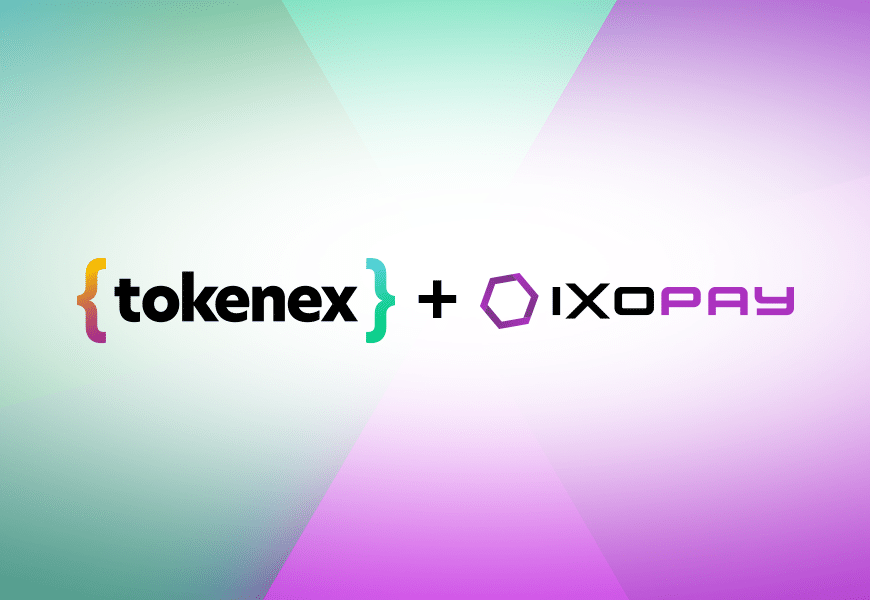Keeping customer card information on file has a lot of benefits, but many companies are rightfully concerned about the potential security issues storing card information can create. After all, any security breach could reveal cardholder information to malicious actors and compromise customer trust and brand reputation.
Thankfully, card-on-file tokenization enables companies to claim all the benefits of storing cards on file while minimizing risk and compliance complications. In this blog, we’ll explain how credit card tokenization works, how it increases company revenue, and the best way to implement tokenization for your company.
Quick Hits:
- Card-on-file tokenization is a term for card information that has been tokenized so it can be securely stored in a company’s internal systems without adding to its PCI compliance burden.
- Card-on-file tokenization increases revenue by solving two major cart abandonment problems: a long checkout process and a lack of customer trust.
- Using tokenization to store customer information solves security and PCI compliance problems that ordinarily deter companies from enabling card-on-file payments.
What is Card on File Tokenization?
To understand card-on-file tokenization, the fundamentals of tokenization are important to know. Card-on-file tokenization is simply the process of tokenization applied to payment card information so that it can be securely stored in a company’s internal systems without adding a compliance burden. But what is tokenization?
Tokenization is the process of taking sensitive data, like a customer’s primary account number (PAN), and swapping it for a “token.” This token will be a similar string of numbers or letters but, unlike an encrypted piece of data, there is no way to convert the randomized string back into its original form. Instead, it works like a poker chip at a game table. The data it represents is real, and it can be swapped back for that data at any time by the data owner. However, in the hands of a cybercriminal, the token is useless.
Additionally, keeping cardholder information outside of internal systems via tokenization reduces a company’s PCI compliance burden. Companies are required to keep every system that touches cardholder data up to the rigorous Payment Card Industry Data Security Standard (PCI DSS). With tokenization, cardholder data is kept out of these systems and the compliance burden shifts to the company’s tokenization provider.
Tokenizing cardholder data allows companies to keep cardholder payment information on file without introducing risk or compliance issues. This is great news for any company that sells its products online. Why? Card-on-file technology can increase revenue for any ecommerce company that takes advantage of this technology.
How Card-on-File Tokenization Increases Revenue
Card-on-file tokenization enables a company to store payment card data without introducing risk. But why do most businesses want to keep cards on file in the first place? Card-on-file tokenization not only increases security, but it can also reduce cart abandonment. Card-on-file tokenization solves two major cart abandonment problems: a long checkout process and the need to secure customer trust.
Simplifying the checkout process
Keeping a customer’s card on file speeds up the checkout process, which can reduce cart abandonment. According to the Baymard Institute’s 2023 research, 17% of carts were abandoned due to a long/complicated checkout process. Card-on-file tokenization enables a merchant to store customer data from a previous purchase. This means return customers spend less time searching for their card and manually entering their information, which significantly speeds up the checkout process.
Increasing customer trust
Storing customer information via card-on-file tokenization keeps cardholder information safe from cybercriminals. According to the Baymard Institute’s 2023 research, 18% of carts were abandoned because users didn’t trust the site with their credit card information. Using tokenization to secure cardholder information can assuage their security concerns. If you’re interested in learning more about how tokenization can secure cardholder information, even in the event of a data breach, you can learn more here.
Card-on-File Tokenization with TokenEx
If you want to reduce your cart abandonment and increase your revenue with card-on-file tokenization, TokenEx is here to help. We enable secure card-on-file payments with our industry-leading tokenization products. Tokenizing card data with TokenEx not only enables you to reduce cart abandonment and increase revenue, but it also:
- Eliminates the need for your company to store payment info in your internal systems, which reduces risk and PCI scope.
- Creates tokens that retain Bank Identification Numbers + last 4 digits of a card number, allowing for additional tracking and analysis (like loyalty programs) or use in mobile wallets.
- Creates a single token that can work across any payment gateway, PSP, or API endpoint that you utilize. This gives you the freedom and flexibility to own your payment data and add or change payment processors as needed.
If you’re interested in enabling card-on-file tokenization with TokenEx you can learn more about credit card tokenization here or consult with one of our representatives to learn more about what we can offer for your unique use case.















